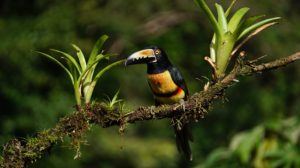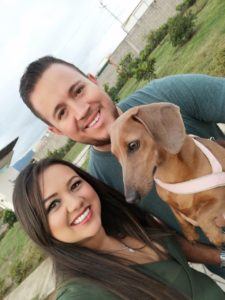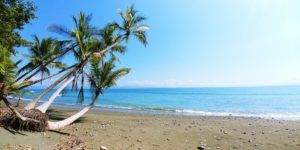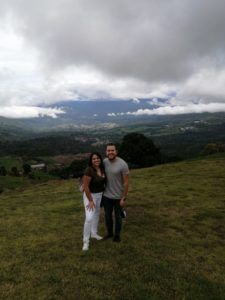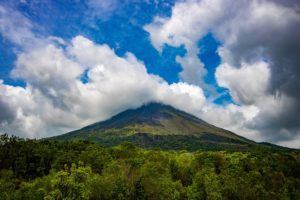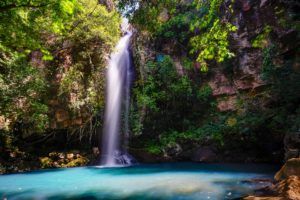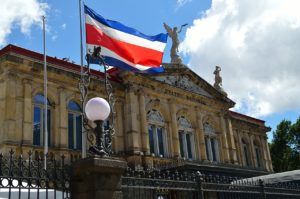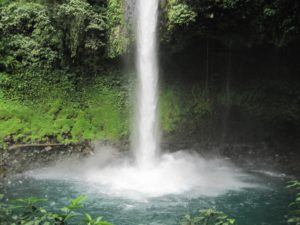Angie Dayan Leitón Chacón,
Costa Rica (1994)
PROPER TREATMENT WOULD BE A BLESSING FOR THE CHILDREN OF COSTA RICA
I had my first attack when I was eight years old. It started as abdominal pain, but I didn’t know what it was – and obviously, I didn’t know anything about HAE at that time. The attack was so strong that I couldn’t walk. I was transferred to a hospital because everyone thought it was appendicitis and stress colitis. The doctors decided to operate me at that time, but after some tests, they chose not to and eventually sent me home.
This must have been around 2002. Where you diagnosed at that time?
Oh, no! Many years went by without me knowing what was happening. My parents did their best to try to find out what was going on, and they paid for many doctors trying to come up with the right diagnosis. One day I visited a rheumatologist, and she did several studies. Later on, she saw me with other rheumatologists from my home city to evaluate my case, and they decided to send me someplace else for yet another analysis. That is why I went to one of the hospitals in San José to see doctors specialized in immunology. There a doctor examined me – and to my amazement, she said that she thought she knew what I was suffering from. She sent me to do blood tests outside the country, and when the results came, I had a positive result for HAE. I was then referred to Mexico because the doctor knew that there was a community of patients with the disease in that country, and she understood that they could help me better in Mexico. So, I wasn’t officially diagnosed before meeting this immunologist in 2016. Today another doctor – in Costa Rica – is treating me.
How has your childhood and adolescence been affected by HAE?
After that attack, when I was eight, I didn’t have another severe one until I was 15 years old. By then the attacks became more frequent, and so it has been to this day. I would say that my adolescence was very difficult. I was attending school, but naturally, my classes were interrupted. On top of that, people were staring at me, so it was indeed a difficult time. Boyfriends, friends – we all want acceptance from the world because it is a challenging age. And it is something that I still have inside because it is very complex. Sometimes I didn’t like people to ask me because it was tough to explain. And until I was 18 or 20 years old, I thought my problem was with my body periphery because only my limbs were swollen.
I guess this also affected, for instance doing sports?
You’re quite right – I had to stop swimming. I liked swimming. Since I was little in school, I used to enjoy swimming. I competed in this sport but was afraid to swell from the effort or impact with the edge of the pool.
I am a positive person, but I have had to leave many things to avoid swelling or worrying my family. On one occasion, I was in teamwork training with my job, and I had to ask not to participate in an exercise where they threw a ball because I thought that if they hit me with the ball, it could give me an attack and could inflame me.
Sometimes I stop myself doing things with friends for fear of inflammation. For instance, I try to avoid entertainment parks because I cannot jump down slides or use machines where there could be any impact that could create an attack.
What kind of HAE treatment do you have?
None. Whenever I have a crisis, I endure the pain. Only when the attack hits my face, they use hydrocortisone and fresh plasma. During my most recent severe attack, my airways swelled, and fresh plasma was used to reduce the crisis.
Are there any other HAE patients in your family?
According to my doctor, no one else in my family has the condition – I am the only one with HAE type I; with HAE at all, that is. Speaking of family and other people close to me: My husband knows about my condition, and he is very well prepared to help me. That is quite important as when I have abdominal attacks, I go unconscious. My boss and my colleagues are also aware of me being an HAE patient. Indeed, all people close to me – like my husband, my mother, and people at work – have a copy of the information about HAE in case something happens. The family of an HAE patient needs to know everything about the condition.
Could you elaborate a bit on that?
Well, it is essential because when I have a strong attack, my husband supports me in everything. He combs me, helps me with medications, with food, etc. People must be aware of the disease and what it can do to the patient. Sometimes at work, if I have a seizure in my hands, my colleagues help me – and at home, my husband does the same. My boss and the company have been very good to me. That is why I think it is imperative to keep them well informed.
How would you describe the present HAE situation in Costa Rica?
I feel that for many people, our disease is insignificant because there is only a relatively limited number of identified HAE patients. On the other hand, patients who live with HAE know that it is not a disease or a situation that must be left for tomorrow to solve. This affects us all: work, lifestyle, plans, etc. I think that the case right now in Costa Rica is tragic because it is challenging to get proper treatment. It has been and still is very difficult for the Government to understand our situation. I recognize that the treatment is extremely expensive, but the Government and the health system should help us in some way. I think that the health system should modernize in some aspects. Many things must change for the good of the citizens – and I have faith that someday it will improve.
How is the support from the doctors in Costa Rica when it comes to HAE?
When they first hear about the disease, the majority of the doctors have shown an interest in learning more. But unfortunately, the health system does not allow them to go further than the initial help they provide us. I would, however, like to stress that the doctors have been extremely good with the patients. When for instance, I have needed them, they have always answered me and responded to my emergencies despite their routines, vacations or personal commitments.
For a while now you have been the national contact in Costa Rica with raising of awareness as one of your main focus areas. How do you do that?
Indeed, the job of Asociación de Angioedema Hereditario Costa Rica is to raise awareness about the condition through our testimonies. I don’t want other people in the future to have to go through what I’ve been experiencing. Having to go to a hospital, having to explain what the problem is, and having doctors look at you with doubtful faces because they don’t know anything about this disease. We have to continue working on building awareness in Costa Rice so that more people – both patients, health care professionals, politicians, and the general public – know much more about HAE.
As the national contact in Costa Rica, you work with HAE International. How do you think the global organization can help you and HAE patients in your country?
Since I first met HAE International, I have started to see the good things for us. The fact that the global organization supports us, helps us, and have proper guidance for us is a blessing.
With HAE International on my side, I started to see all the good things I want to do in Costa Rica. For instance, the HAE International Regional Patient Advocate for my part of the world – that is Javier Santana – has proved to me that he is willing to work with me, with our organization and with the HAE patients in Costa Rica.
Having a solid contact with HAE International via the Regional Patient Advocate has made things easier for me. For sure, it is not the same to work alone here in Costa Rica for our disease and to have the support and presence as an international organization with the proper resources and global experience. Working with HAE International has helped us clarify many doubts that we had as patients, and it has given us the support that any group, with any disease in the world, needs from an international organization. Indeed, I am very grateful because from the first moment I met HAE International and the Regional Patient Advocate, I have never felt alone.
What are your short-term tasks in Costa Rica?
Take action as soon as possible – and hold more meetings and conferences to talk about HAE in Costa Rica. With our legally established organization, it will be much easier for us to carry out this type of events. At the moment, it is very hard for us to reach the media, so another short-term task is to get a broader audience via the media and create awareness about the disease.
Let me close with a personal question: What do you think your life will be like the day Costa Rica finally has access to modern HAE treatments?
For me, it will be a dream come true. I would be able to live an everyday life. I can imagine I won’t have to live with the anguish of not being able to do what I want. Not having to live with the mystery of not knowing when or how the next attack will hit me. Sometimes, as much as I take care of myself, I don’t know why I have an attack, and that saddens me. But to think that modern HAE treatments will arrive for us in Costa Rica is a dream – it is to have won the battle against the disease. I think every day about the children who are hospitalized due to HAE. If proper treatment came to Costa Rica someday, it would be a blessing for them too. I think about how it could change their lives as well as the lives of adult HAE patients.




